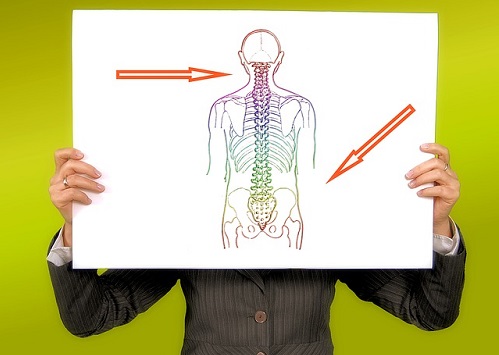 Think you don’t have to worry about back problems as you get older? Unfortunately, science says otherwise.
Think you don’t have to worry about back problems as you get older? Unfortunately, science says otherwise.
Results from a 2018 study published in The Spine Journal found that spinal degeneration is both prevalent and fairly progressive among older adults. In fact, CT scans of the spine taken 6 years apart among over 1,200 cohort members of the Framingham study found that upwards of one-third of adults between the ages of 40 and 59 have moderate to severe degenerative disc disease. Over 50 percent also have moderate to severe spinal osteoarthritis.
Don’t miss this essential guide to understanding spinal degeneration, what causes it, as well as symptoms, treatment, and prevention tips:
What is Spinal Degeneration?
At its core, spinal degeneration is just that - the deterioration and loss of function in the components that make up the spine. These include the vertebrae and the rubbery spinal discs between the vertebrae that help cushion and absorb shock. Spinal degeneration may present in the form of:
Degenerative disc disease - wear and tear to the spinal discs over time can result in a gradual degeneration that eventually causes the spine to compress and for discs to even pop out of their casing, impinging nearby nerves (herniated disc). As you age, your spinal discs also lose water making them more susceptible to tearing or rupturing.
Spinal osteoarthritis - cartilage lining the facet joints that help hold the vertebrae in your spine together can wear away over time, leaving some vertebrae to rub against one another. Not only can this leave the joints inflamed, but the body may try to compensate by growing bone spurs to restore stability to the spine.
Additional forms of spinal degeneration including spinal stenosis (the narrowing of the spinal column), neuropathy (dysfunction in the nerve’s ability to send messages between the body and brain), and nerve compression (like you may experience with sciatica).
Symptoms of Spinal Degeneration
Depending on the type and severity of spinal degeneration, symptoms may vary but almost always include pain. Pain may range from a nagging discomfort to a throbbing, disabling affliction. Pain may present in a variety of ways including:
- Pain in the lumbar spine (lower back), buttocks, and legs
- Radiating pain in the neck that travels to the arms and hands
- Pain that is worse when sitting and less noticeable when walking
- Pain that is exacerbated by lifting, twisting, or bending
- Pain that lessens when lying or sitting in certain positions
Spinal degeneration that causes long-term nerve damage may also feel like tingling sensations or numbness in your extremities.
Treating Spinal Degeneration
Doctors continue to develop new and innovative methods for treating spinal degeneration to prevent pain and dysfunction. Some conservative measures include physical therapy, exercise, hot and cold therapy, and over-the-counter pain relievers and anti-inflammatories. In severe cases, steroid injections may be given or surgery administered, i.e. to repair a herniated disc or fuse portions of the spine together.
Preventing Spinal Degeneration
While some spinal degeneration may be genetically inherited, there are plenty of practical steps older adults can take in their everyday life to prevent it too. These include:
Practice good posture - maintaining a healthy spine happens largely through practicing good posture when sitting, standing, and participating in physical activity. If your spine is already shortening, however, it may be hard to sit up straight. Experts recommend doing core and back-strengthening exercises regularly, as well as utilizing orthotic supports like back braces. For the best back braces, click this URL:https://www.vivehealth.com/blogs/resources/best-back-brace. Flexibility-boosting practices like yoga and tai chi can help keep the back strong and limber as well to reinforce a strong spine.
Maintain a healthy weight - key risk factors for herniated discs include being overweight or obese. Simply carrying excess weight around, especially in your midsection, can stress the spine past its bio-mechanical limits. A healthy weight is also supported by the nutrient-dense fruits, vegetables, grains, and plant-based proteins that give your spine the vitamins and minerals it needs to functional properly.
Exercise regularly - routine physical activity plays an important role in staving off lifestyle diseases like diabetes, hypertension, and heart disease and can also be the key to protecting your spine. Exercise reinforces strong muscles and bones that can more properly support your spine to prevent strain and injury. When you are physically active, the circulation of blood increases in your back as well delivering oxygen and vital nutrients to foster healing and flush away inflammatory waste products.


Comments